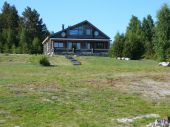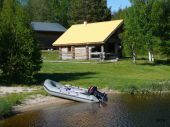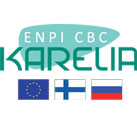
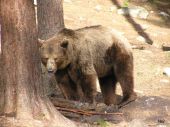 The fieldwork included counts of the brown bear (Fig. 1, 2), confirming the limited abundance of the species in the district (0.2 – 0.4 animals per 1000 ha), although locally, e.g. around Lake Tulos, the species population density was nearly 1 animal per 1000 ha.
The fieldwork included counts of the brown bear (Fig. 1, 2), confirming the limited abundance of the species in the district (0.2 – 0.4 animals per 1000 ha), although locally, e.g. around Lake Tulos, the species population density was nearly 1 animal per 1000 ha. The locations of capercaillie leks and the numbers of lekking grouse in them were determined In relatively undisturbed areas (Fig. 3, 4, 5). Such sites still attract capercaillie, and spring leks are an attraction for hunters.

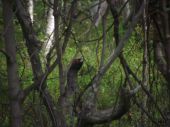

Counts of moose faeces along transects in regenerating sites (logged 8 – 12 years ago) showed the animals used the sites throughout the winter season, but mainly in the second half of the winter (Fig. 6, 7, 8), as indicated by the proportions of scat dropped at different times. The faecal index in recently felled sites was 15.5 droppings per 1 km, and in a 30-40-year-old forest – only 0.3 droppings per 1 km of the transect.


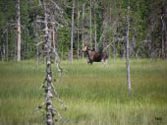

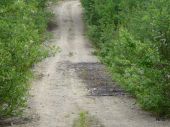 Field surveys confirmed the need for timely control of the numbers of the Canadian beaver to prevent the negative consequences of its activities on communications in the hunting farm (Fig. 9, 10). Blocking of drainpipes with branches and twigs, and erosion of road surfaces in front of the beaver dam are common consequences of beaver activities.
Field surveys confirmed the need for timely control of the numbers of the Canadian beaver to prevent the negative consequences of its activities on communications in the hunting farm (Fig. 9, 10). Blocking of drainpipes with branches and twigs, and erosion of road surfaces in front of the beaver dam are common consequences of beaver activities. 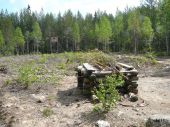
 The main game management activities in hunting farms of different types have been specified (Fig. 11, 12), their effectiveness was evaluated, the resources and infrastructure of individual hunting farms were determined, and the “Black Rocks” hunting farm was found to be the most advanced in this respect (Fig. 13, 14).
The main game management activities in hunting farms of different types have been specified (Fig. 11, 12), their effectiveness was evaluated, the resources and infrastructure of individual hunting farms were determined, and the “Black Rocks” hunting farm was found to be the most advanced in this respect (Fig. 13, 14).